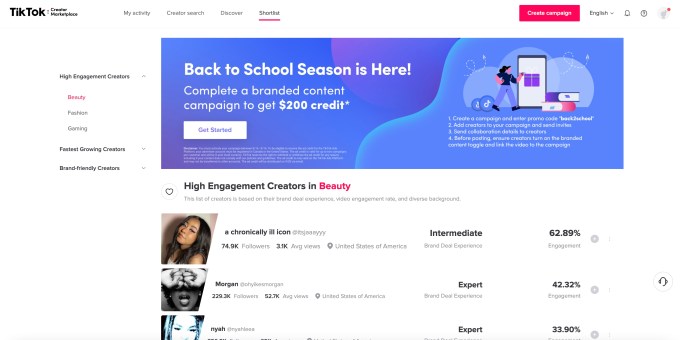- August 31, 2021
- by:
- in: Blog
African startups also increased from 10 in the winter batch to 15 this time around, a record for African startups in a single YC cohort.
Y Combinator’s summer batch of 2021 features 377 startups from 47 countries. It’s the 33rd Demo Day of the well-known accelerator and holds the largest cohort yet. YC S20 had 198 startups, so that’s a 90% increase from last year.
About half of the companies represented are based outside the U.S. The countries with the most representatives (aside from the U.S.) include India, with 33 startups; the U.K., with 18 startups; Mexico with 17; Singapore with 12; and Canada and Brazil, 11 each.
While the Demo Day for this year’s winter batch was held in a day, it’s two days for this summer batch. Today, 189 companies will pitch, while the rest will pitch tomorrow.
African startups also increased from 10 in the winter batch to 15 this time around, a record for African startups in a single YC cohort.
“This is the largest batch we have ever funded and it’s about 50% international. As a result, it is not surprising that this is the largest cohort from Africa,” Y Combinator managing director and group arptner Michael Seibel told TechCrunch when asked if any extra factor contributed to the rise in accepted African startups.
Another valid reason for the uptick could be that YC is getting more applications from Africa due to the recent success stories of Paystack and Flutterwave. At least, that’s the view shared by Kat Mañalac, the head of Outreach at YC.
“Alumni are always the best spokespeople and representatives for YC. A lot of African founders (and future founders) I’ve spoken to were encouraged by seeing Paystack do so well and get acquired. The success of a lot of our African alumni are inspiring more African teams to apply,” she told TechCrunch.
Nigeria leads the way again with five startups, while Egypt has four, Morocco has two, and Kenya, Ghana, Zambia and South Africa each have one. Here’s the list of African startups that made it to YC S21 in alphabetical order.
Amenli (Egypt)
Africa has the lowest insurance penetrations globally. In Egypt, the insurance penetration rate stands at a minuscule 1%.
Amenli, founded by Shady El Tohfa and Adham Nauman in 2020, is addressing an untapped $2 billion market, being the first licensed online insurance broker in the country.
Chari (Morocco)
A wave of disruption of digitizing informal retail stores is sweeping across emerging markets this year, and Chari is joining in on the action.
Sophia Alj and Ismael Belkhayat founded Chari in 2020. The company allows traditional retailers in Morocco and some parts of North Africa to order consumer goods via its platform and handles free delivery to their stores. Chari has a fintech side by providing these retailers with credit.
Fingo (Kenya)
Neobanks have taken the world by storm and Africa is the last frontier for this brand of fintech innovation. Fingo is providing an alternative brand of banking to African millennials, starting from Kenya.
Founded by Kiiru Muhoya Gitari Tirima James da Costa and Ian Njuguna in 2020, the digital bank claims to offer fees 90% cheaper than traditional banks in Kenya, among other services.
FloatPays (South Africa)
In South Africa, up to 5 million employees borrow money to meet their monthly needs when they exhaust their salaries. However, the lending options for these employees come with outrageous interest rates.
Simon Ward founded FloatPays in 2019 as an on-demand wage access platform to help employees access, spend, save and manage their money.
Freterium (Morocco)
Managers of delivery businesses handle hundreds or thousands of delivery points every day. With a fleet made up of many trucks or vans, there’s a need to drop a delivery plan for each at different locations daily. How do they optimize for costs and efficiency at the same time?
Enter Freterium. The company allows contractors, manufacturers, distributors and logisticians to plan and optimize their B2B or B2C shipments while providing a cloud platform for real-time visibility of shipments, logistics infrastructure and seamless collaboration that breaks down traditional organizational silos. Omar El Kouhene and Mehdi Cherif Alami founded Freterium in 2018.
Infiuss Health (Nigeria)
A large number of Africans are exempt from clinical research studies due to time constraints. Per reports, it can take up to ten months to conduct such studies in these climes.
Infiuss Health says it is building a decentralized platform for remote research and clinical trials in Africa. How? By connecting researchers directly to patients who want to participate in clinical research studies in less than a week.
The company was founded by Melissa Bime and Mbah Charles in 2020.
Lemonade Finance (Nigeria)
There are millions of African immigrants in Europe and North America. Some have established businesses in both these regions and also in Africa.
In another digital banking play, Lemonade Finance provides multi-currency accounts for these migrants to enable seamless transactions and banking. The company was founded by Rian Cochran and Ridwan Olalere in 2020
Mecho Autotech (Nigeria)
Repairing one’s vehicle can be a painstaking process in Africa due to pricing and quality issues. The latter is because many of these professionals (mechanics) are unvetted.
Ayoola Akinkunmi and Olusegun Owoade started Mecho Autotech in 2021 as an on-demand auto maintenance and repairs platform. Mecho Autotech has created a network of vetted mechanics, and via an app, car owners can book and pay for their services.
Odiggo (Egypt)
Like its predecessor on this list, Odiggo connects car owners with mobile mechanics in the Middle East. On the platform, car owners can also access extra services, which include car washing and maintenance.
Although Odiggo lists as a Dubai-based company on the YC database, it has origins in Egypt and launched operations first in the North African country.
Payhippo (Nigeria)
Access to credit is still very much a problem to the millions of small and medium businesses in Nigeria, which make up most of the country’s businesses.
Founded by Zach Bijesse, Uche Nnadi and Chioma Okotcha in 2019, Payhippo provides loans to businesses that couldn’t ordinarily get loans or credit cards from banks or other financial institutions.
Pylon (Egypt)
Water and electricity distribution companies face losses from leakages and thefts when opening new revenue streams in emerging markets.
Pylon acts as an infrastructure management platform for these distribution companies and helps to reduce these losses. It was founded in 2017 by Ahmed Ashour and Omar Radi.
ShipBlu (Egypt)
When merchants start to grow their e-commerce businesses, it can be difficult to manage the end-to-end delivery and fulfilment needs. In Egypt, several platforms are already offering solutions to this ever-growing need, and ShipBlu is adding to that list.
Founded by Ahmed ElKawass, Abdelrahman Hosny and Ali Nasser in 2020, ShipBlu claims to offer a full suite of delivery services for e-commerce merchants from overnight to delivery to five- to seven-day delivery.
Suplias (Nigeria)
Another digitizing-informal-retail-stores play, this time from Nigeria. Suplias is a B2B marketplace where mom-and -op stores in Africa buy inventory directly from manufacturers using a mobile app.
The company was founded by Stephen Igwue, Michael Adesanya and Sefa Ikyaator in 2019.
Union54 (Zambia)
African fintechs are in the business of providing virtual and physical cards to their customers. However, it doesn’t come easy and cheap when done in partnership with banks.
Union54 is an alternative and provides an API for them to issue debit cards cheaper and faster. It was founded by Alessandra Martini and Perseus Mlambo in 2021.
Yemaachi Biotechnology (Ghana)
Yaw Attua-Afari, Yaw Bediako, David Hutchful and Joyce Ngoi founded Yemaachi Biotechnology in 2020. The startup’s idea is to diversify precision cancer diagnostics and treatments across the continent, starting with Ghana.
An estimated 752,000 new cancer cases, 4% of the world’s total, occurred in sub-Saharan Africa in 2018. Yemaachi is working to lower the burden cancer causes by creating molecular diagnostics optimized for all Africans.










